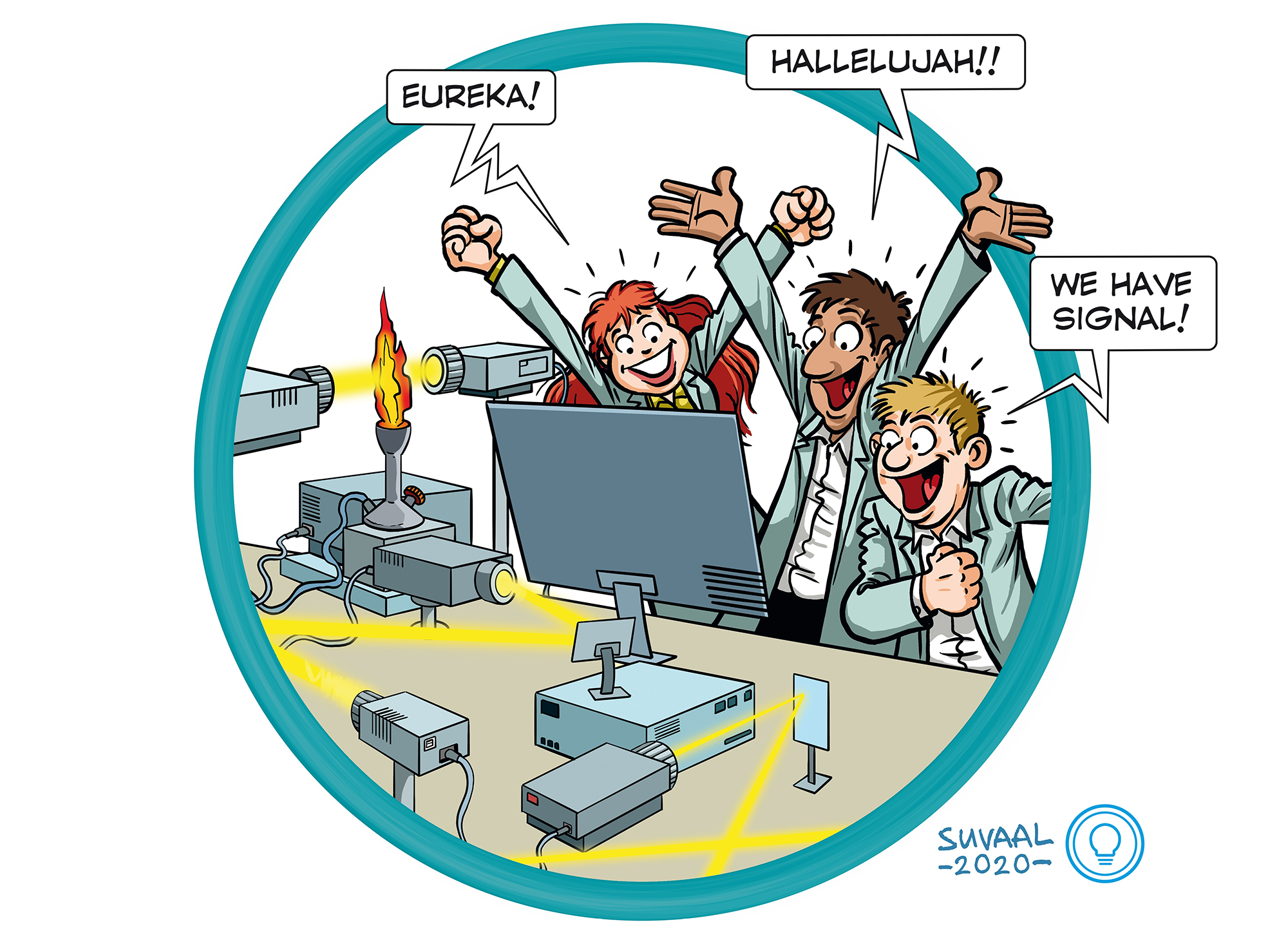Multidimensional non-linear optical spectroscopy in reactive flows
Themes: Aerospace, Energy


A TRL is a measure to indicate the matureness of a developing technology. When an innovative idea is discovered it is often not directly suitable for application. Usually such novel idea is subjected to further experimentation, testing and prototyping before it can be implemented. The image below shows how to read TRL’s to categorise the innovative ideas.
Summary of the project
The researcher is engaged in investigating chemically reactive flows that can help to make propulsion systems or other combustion processes more “green” and sustainable. For instance, those flames fed with biofuels and hydrogen, which can lead to zero emission of fossil-derived carbon dioxide. The researcher develops innovative and powerful non-linear optical spectroscopy techniques to be applied in harsh measurement environments such as turbulent flows, flames, and plasmas.
His expertise lies in diagnostics development for chemically reactive flows to quantify scalars such as temperature, pressure, and species concentrations. One technique which he uses frequently is Coherent Anti-Stokes Raman Spectroscopy (abbreviated CARS). With this technique he is able to measure non-intrusively, without perturbing what needs to be measured. If you would want to measure the temperature of a flame you don’t have to insert a physical probe (thermocouple) to do so. Not only does the physical probe make changes to the combustion flow, but it can also melt at the high temperatures which are present in the flame (up to 2500 K). Instead the use of an optical method based on coherent light scattering is much favorable, especially if temperature needs to be determined very precisely. With this technique, the “incident” light from three laser beams is mixed with the internal rotational and vibrational energy states of the molecules to generate a fourth coherent light beam which “exiting” the measurement sample in a “laser-like” fashion. The wavelength of this scattered light is shifted in accordance with the internal molecular energy levels, and it is from this beam of light the temperature and species concentrations in the measurement sample can be determined very precisely (it holds for the gold-standard in gas-phase thermometry). How “intense” the molecules rotate and vibrate depends highly on the temperature in the gas. Intuitively, one can think that the higher the temperature in the gas, the faster the molecules will rotate and vibrate. The unique energy states of the molecules can also be used to identify the species in analogy with “fingerprints”. The measurement is performed in situ, with high spatial and temporal resolution. The excellent resolution is important to retrieve the scalar distribution in the flame, which thin shape consists in steep temperature and species concentration gradients. His innovative idea has allowed him to measure in a plane instead of a single point. The beauty of this type of imaging is that it allows for more rich information to be obtained, as most all thermo-chemical processes (diffusion, mixing, and energy transfer) depend on the context in which it takes place.
What's next?
The next step for this innovative idea is to expand the CARS measurement capability into more dimensions (up to 5D!) and specialize it for quantification of hydrogen and carbon dioxide. This would allow to gain unique insight at those thermochemical processes involved for generating heat release with non-conventional fuels which is of outmost importance in the current energy transition.
Dr. Alexis Bohlin
Bio Engineering Institute
Faculties involved
Faculty of Aerospace Engineering
